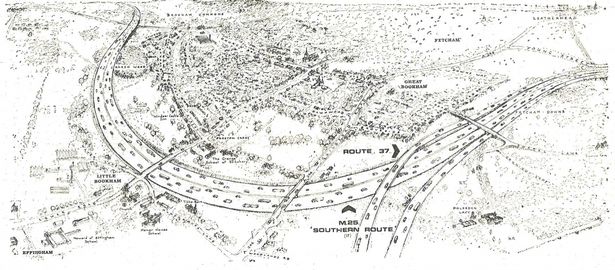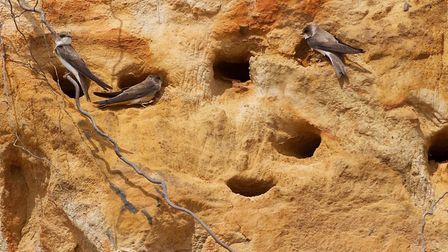Ten Square metres of woodland in leafy Surrey
Many years ago I read an advert about selling a small plot of woodland near Leatherhead. At the time I did not know where Leatherhead was. Reference to paper maps provided the answer. At the time Leatherhead was the dominant town of the area. Now it is Epsom, and at the time I obviously had no idea that years later I would be living in Epsom.
A phone call to the advertisers and arrangements were made together with details of how to get there from Leatherhead town centre. Another look at the maps to plot a route.
The allocated day arrived and it was not too difficult to find. There were a number of cars parked at or near the gate.
The land hand literally been pegged out into ten metre by ten metre plots. Access was by walking across somebody else's plot, and for other's, across my plot. It was advertised as for recreational purposes, which was my interest.
However, it appears that the reality was somewhat different. At least it was not a scam, fraud. It was an attempt to frustrate the building of the proposed M25 by severely complicating the land purchase process. One owner of a wooded field of ten hectares or one thousand different owners of 100 sq m.
From an anti road perspective it may seem a valid ploy, but in reality it just increases the cost to the public purse. It is very unlikely to result in the road being diverted or cancelled. Much more money will have already been spent on devising the route, and it will already be a compromise of all the different potential routes.
I did not pursue that opportunity to buy some recreational woodland, with questionable access.
In June 1971 the M25 Action Group launched its campaign to divert the 'southern' route away from Leatherhead and instead cut across Brooklands racing track.

The sketch shows a proposed alternative route avoiding the tight squeeze threading between Leatherhead and Ashtead. Instead it proposes to go southward through Norbury Park / Fetcham Downs, skirting Great Bookham, and turning back towards the north at Little Bookham, near the Grange, towards Bookham Common, then re-joining the official proposed M25 line.
It was one of 39 public enquiries the beleaguered motorway scheme would face before it was finally opened some 15 years later.
In September 1973, the group’s campaign tumbled like a clump of tarmac and Geoffrey Rippon, secretary of state for the Environment, rejected its alternative southern route.
The M25 Action Group’s chairman, Sir Ronald Harris, was unequivocal in his response to the secretary of state’s decision.
“One of deep disappointment.”
Arthur Durham, then chairman of Leatherhead Urban Council, was of similar sentiment and chirped that the inspector had given more concern to the peace and quiet of Effingham and Little Bookham than he had to those of Ashtead and Leatherhead.
“They will suffer far worse noise now the northern route is chosen.”
I think it was, at the time, a case of "not in my back yard" than an interest it the environment. However, the M25 corridor between Leatherhead and Ashtead does suffer from a poorer air quality than surrounding areas, not unsurprisingly. Even if current environmental concerns were applied, would a route through Fetcham Downs and Bookham Common have gained traction against the Leatherhead route.
The greater argument is however, for the road on environment grounds. Given the growth of road transport the emissions were destined to inevitably increase. Traffic can be modelled in a similar fashion to Fluid Dynamics. The cleaner the flow the better the outcome. Taking traffic away from normal roads which are already congested and slow moving, and frequently in densely populated areas, and putting it on cleanly flowing motorways has many environmental and commercial benefits, including air quality. Motorways obviously do take space and have an impact on that land and those living around it.
The M25 has it is now apparent been a victim of its own success, creating it's own congestion, but arguably better than putting the same volume on the surrounding normal roads. Consider driving along the A25, perhaps through Dorking or Westerham.
The solution is not to constrain the infrastructure. It is more appropriate to look at the root cause, the amount of traffic and the source of propulsion. Change the culture of the country to reduce traffic and change to electric or hydrogen as the source of energy, to improve air quality and reduce congestion. Return to working close to home. Greater use of public transport and human power, walking and cycling. Changing the patterns of society.
Delaying the building of such infrastructure just delays the realisation of the benefits. A worse environmental impact, and yes sometimes an ancient woodland, or a few hundred homes have to be scarified for the greater benefit of both the environment and society.
